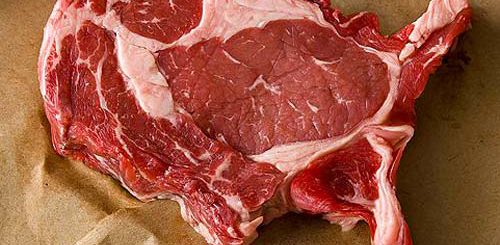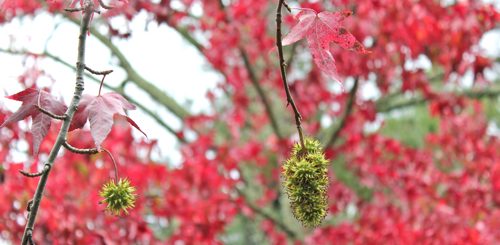{restaurants} Chengdu, China is for Lovers… of Food
I am kind of shocked that no person/guidebook/blog/website happened to mention that the city of Chengdu is heaven for people who love food. Somehow after having tons of great guidebooks and local advice in Beijing, we arrived here in Chengdu with nary a useful piece of information, as our guidebook turned out to be all useless and stuff, so we left it on the plane. But with our sharp wits and a couple Chowhound tips, we have really come to love this tiny Chinese burg of only 10 million people. (It literally seems provincial compared to Beijing.)
Sichuan province, of which Chengdu is the capital, is known throughout the land for having a) great food, b) spicy food, and c) street food. We have had the opportunity to partake in many combinations of a, b, and c. Since the street food is just too much to put in this post I will cover that in Part 2. This will just cover sit-down experiences. Admittedly most of the Sichuan food we ate was from street vendors and little teeny shops so most of these restaurant recs are not strictly Sichuanese or even Chinese, but I think it’s a good rounding out since you can’t eat Chinese food morning, noon, and night. I mean, you CAN, but with all of the options available, why would you?
How to get there: this is not a well-known restaurant, so you basically have to get a cab to take you to KeHua Jie and Guo Jia Qiao Bei Jie, except on a map it looks like these 2 streets don’t intersect. They do, though, so it’s kind of tricky. We had to have someone in our hotel kind of point close to the spot where they almost intersect and tell a cab driver to take us there, then wander until we found it. I included a photo of the outside to help you recognize it, since the sign is not in English or Pinyin.
This is a Xinjiang (Uighur) restaurant that someone recommended on Chowhound. And a terrific recommendation it was! There are a lot of Tibetans, and a fair number of Uighurs in Sichuan province, making your Chinese ethnic food choices all the more exciting. This place is right near Sichuan University so it’s a fun area as well. Outside the restaurant, there is a grill with skewers and round, flat bread- like naan but thicker- which tastes delicious when hot from the oven. We could have, and probably should have just eaten skewers and bread, which were very cheap and tasty. But we were too tempted and ordered the Da Pan Ji, which is a big sloppy pan of chicken, onions, and peppers in a red sauce that sloshes over the side and onto the table. The gorgeous, no-nonsense Uighur waitress came back to the table after a few moments, and in an extremely unceremonious fashion, she dumped a plate of homemade wide flat noodles on top of the chicken plate. All of this was way too much food, but still only set us back around $US 8 including tea and beers- and could have easily fed 4 or 5 people. The setting is extremely bare bones, and on a warmer day the front of the restaurant is open to the street. There is a pinyin menu but no English menu, and the folks there don’t speak English- which is another good reason to just get the lamb skewers and bread from the grill outside, since pointing is effective- although if you say “Da Pan Ji” enough times, they will figure it out eventually.


Dumplings at a little teeny tiny place on Shuhan Dongjie, near the Tibetan Street
How to get there: The Tibetan Street, which is Wuhouci Cross Street, is right near Jinli Road and the Wuhou Temple. So if you are at the Wuhou Temple/Jinli Road gate, and facing out towards Wuhouci Street, the Tibetan Street is just across the street and forking to the right. Walk down Wuhouci Cross Street for a few blocks, and make a right on Shuhan Dongjie. You will pass a covered alleyway market and some other small shops but this is the only dumpling shop on the block, and since folks are making dumplings right there it is easy to spot.
This was a really fun and yummy experience. We saw a little tiny shop where there were 3 people around a tiny table making homemade dumplings. One guy was rolling out the dough, and the other 2 people were filling the skins with all different meats from a bunch of bowls on a shelf above them. There were only 2 tight tables. We pointed and gestured and they made our dumplings right there, then took them to the back to boil them. No English was spoken, so we inadvertently ordered 5 orders of chicken dumplings, instead of ordering 5 dumplings as a snack, but in hindsight it makes perfect sense because it’s not normal to just get 5 dumplings in China, it’s normal to get a whole big plate. So we ended up with a too-big pile of dumplings, probably 30 or so, as it seems 6 is a common number for 1 order of dumplings. They were fresh and tasty, and at any rate they were only 10 yuan or about US$1.50 for the whole plate. But, they didn’t have drinks, so I recommend buying a water or soda or beer at another store nearby before sitting down, or while waiting for your order.

Everything at Tandoor Indian Restaurant
How to get there: it’s right by the Sunjoy Inn, so you can get a taxi to the Sunjoy Inn and it’s just behind it, to the left, kind of in the parking lot.
I know, you’re like, Indian food in CHINA?!?! WTH?? We had to eat here twice because it was so good and because we eventually tired of hot, spicy, numbing, oily Sichuan food and wanted to go for hot, spicy, less numbing, less oily Indian food instead. Even in a city this large, we were assured this was the only Indian restaurant in Chengdu that is run and staffed by Indians. I was expecting it to be not as good as the Indian food I’m used to in SF, but I was happily disabused of that worry when the first dishes came out. The manager spoke with us for quite some time about his own experiences with working and living in China, and how they have had to adapt some menu items for a Chinese palate. Mostly what this means is that there is BEEF and PORK on the menu! Which is so weird! He said that if there is no beef or pork, the Chinese customers won’t come, so they had to put their religious views aside and stick a tandoori pork (amazing) and a beef korma (saucy delicious) on the menu. The naan is freshly made and everything was top notch. The space is quite airy and attractive, with carved wood ceilings and art imported from India. Plus, you get to eat with a fork instead of chopsticks! And they give you a napkin! Dinner for 2 with a lot of food and side dishes was around US $45.

Chilean Wine at the Bookworm
How to get there: it’s right near the Sunjoy Inn and across the street from Tandoor restaurant. You can get a taxi to the Sunjoy Inn, then, if you’re facing the inn, it’s just to your left.
Oh, wine, how I missed you. It’s really hard to get wine in China that’s not massively expensive, or yucky, or both. So to get a big glass of Chilean red for 30 yuan (around US $4.50), in a fabulous setting no less, was a real treat. The Bookworm is a bookstore/cafe/bar and has books in English for sale in case you’ve run out of reading material- at reasonable prices no less- and also they have a library of books you can read while you’re there (and I believe, borrow, if you’re there for a longer period.) It’s cozy and cute and when we happened upon it, there was a swinging jazz quartet playing. The crowd was a mix of ex-pats and groups of young Chinese hipsters. They appeared to offer some food there, like simple pizzas, but we didn’t try it.

The live jazz music at The Bookworm is a welcome auditory shift from people yelling into their cellphones!
HotPot at any restaurant, any time
How to get there: ask anyone where there is a good hotpot restaurant, they are all over the place and they all kind of seem the same although I am sure many people would find that comment offensive or untruthful in some way.
I feel I have to talk about hotpot because it is a very famous regional thing to eat, and everyone will recommend you eat it. I mean, EVERYONE. But, I don’t really like it that much. The basic concept is that you get a big hot pot of boiling oil over a flame on your table, and you cook meats and vegetables in the oil and then eat them. You can either get spicy oil or a non-spicy oil called Mandarin Duck Sauce, or a half-and-half hotpot that has both. Although it sounds like it will be like a yummy meat fondue, there are several reasons why it is not delicious. The spicy oil is insanely spicy, and even tough spice guys who shall remain nameless were unable to stomach the hot oil, so we were left with the Mandarin Duck Sauce. The “Sauce” was really just oil that was flavored with all manner of odd things, which was only revealed beneath its murky surface when I had the misfortune of dropping a potato into the depths and fishing it out. Fished indeed, as I got more than I bargained for, when the spoon dredged up all manner of fish bones and heads, and slices of organ meats. That aside, it’s also incredibly oily. You cook the meats or vegetables in the hot oil, then you are supposed to put it in a dish of sesame oil to cool it. So it’s like, double-oiled. Even without the sesame oil part it comes out really oily. Also, ironically many people expressed wonder at our desire to eat “unsanitary” street foods, but the hotpot seemed far more unsanitary as it was unclear how many times they reused the oil… and it definitely didn’t seem like they would only use it once. Most Chinese people we asked also felt skeptical about this issue and felt it was most likely being reused. I could handle the grease and the unsanitary aspect if it was delicious. But it just, ISN’T, in my opinion. With so many fabulous things to eat in Chengdu, it is mind-boggling that they keep pushing the hotpot experience on you, since it is the least appealing option. I can’t remember how much it cost, but I think around US$15 or $20 for 2 people.

Small Fries at McDonalds in People’s Square
How to get there: It should be pretty obvious as People’s Square (aka Renmin Square) is the main central plaza in Chengdu and there is a ginormous statue of Mao in it, also the Sichuan Science and Technology Museum (which looks exactly like a giant high school.) Look for ostentatious fountain displays and swirling golden light fixtures.
After a week in China you start to long for things you never even eat in the US. And additionally, eating my golden sticks of American capitalism while looking out the window at an enormous statue of Mao in the main town square is extra satisfying because it’s akin to flipping the Supreme Leader the bird. Dipping each fry in ketchup, then savoring the tasty salty freedom fry in my mouth, I looked at him and thought: You may have killed 50+ million people with your crazy ideas, but in the end, we won! Take that! Price for small fries: 5 yuan, around 75 cents US.

Tea-house Starbucks in Jinli Road
How to get there: get to the Jinli Road gate- there is only one, as Jinli Road is a dead-end pedestrian street- and it’s one of the first shops on the left.
You don’t have to get anything at this Starbucks, although you might be tempted after weeks of Nescafe- but you should pop into this one as it is really very cool! I am a big fan of combining old and new and this place does it quite well. It is in an old wooden carved teahouse building and has been outfitted in a traditional teahouse manner while still being outfitted as, you know, Starbucks. It even has the spacious back garden area like the teahouses. Next door there is a teahouse similarly outfitted if you want to go for the real Chengdu tea experience. Unfortunately I didn’t get a good photo of it so you will just have to go there and see for yourself.






Geez, everytime I see blogs this good I just want mine to be there already! 🙂 Great work. I blog about the rapid weight loss effects of resveratrol.